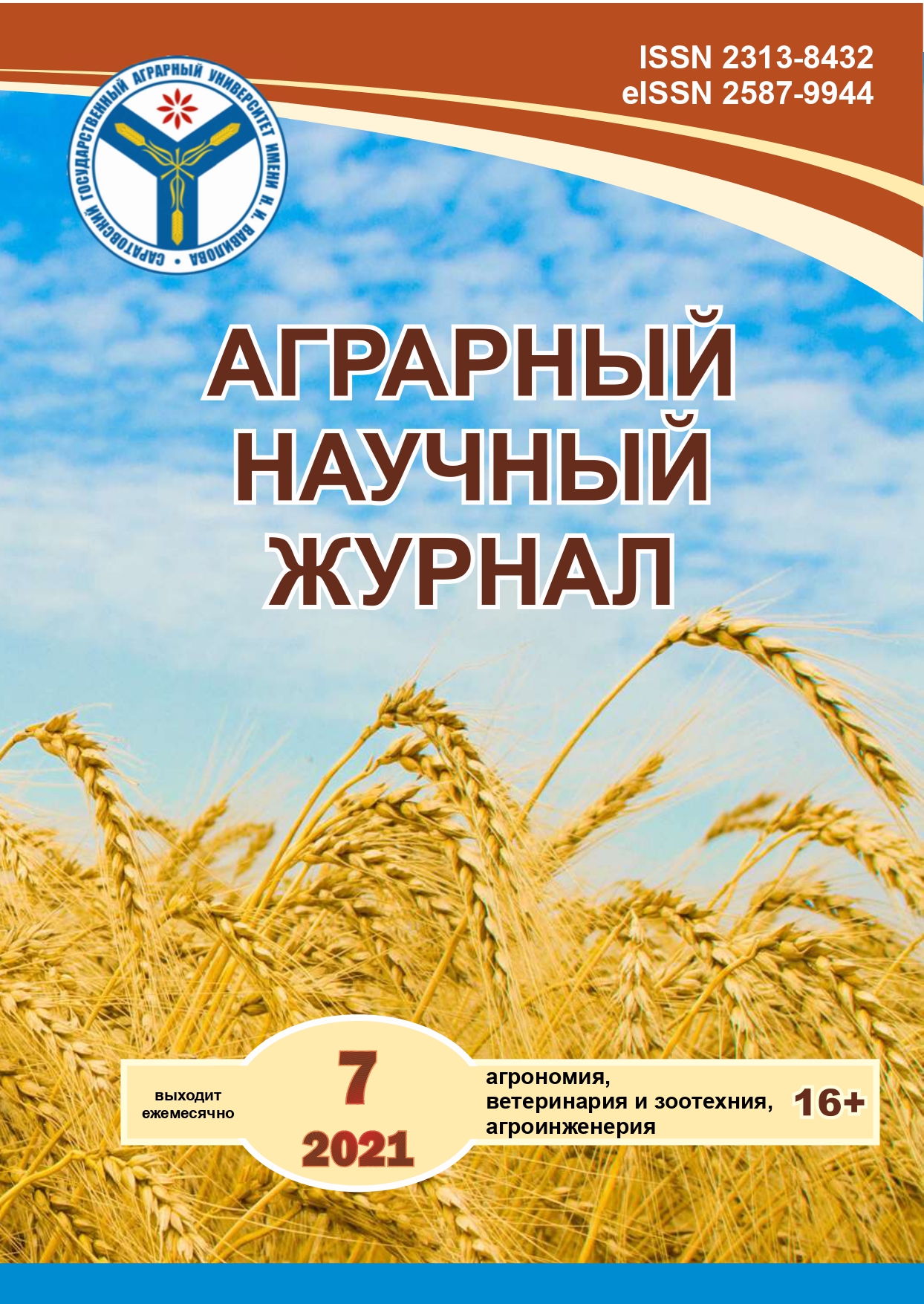Heat and mass transfer in the grain under variable conditions
DOI:
https://doi.org/10.28983/asj.y2021i7pp84-87Keywords:
wheat, drying, mode, evaporation, temperature, heat transfer, diffusion coefficientAbstract
The article describes the drying process in the formulation of the internal problem, the main equations of internal heat and mass transfer of potentials are considered. The process of removing moisture from the surface of the grain, which is determined by the transfer of moisture and the diffusion-convective transfer of heat and moisture through the boundary layer, is studied. The movement of heat in the boundary layer was determined by the molecular thermal conductivity. It is established that the speed of the drying process depends on the rate of removal of water vapor from the surface of the grain. It was found that the change in the quality of the seed material did not depend on the absolute removal of moisture. The first drying period is shown, when the temperature of the grain surface rises from the temperature of the adiabatic air saturation, when the drying agent at the boundary of the grain surface is saturated with water vapor, and the drying speed depends on the speed of their removal from the evaporation surface. At this point, the moisture evaporated, the vapors were removed by the drying agent. At the initial moment, the movement of the evaporation line did not occur, but then it was fixed inside the grain. In the course of research, the process of removing moisture from the seeds is fast, but it has little effect on their quality. The removal of grain moisture reached up to 3 % from the upper layers of the seeds, which did not affect their quality. An analytical expression is considered for calculating the heat transfer coefficient and the drying agent velocity, taking into account the allowed moisture content, as well as the heat flux density. The permissible speed of the drying agent in a dense layer of grain is determined, which depends on the height of the layer, the specific surface of the grain, its temperature and the proportion of heat supplied to heat the material. For drying conditions typical for grain dryers, the drying speed should not exceed 0.6 m/s.
Downloads
References
Анатазович В.И. Сушка пищевых продуктов: справочное пособие. – М.: ДеЛи, 2000. – С. 15–17.
Загоруйко М.Г., Павлов С.А. Исследование кинетики досушки зерна на складе // Аграрный научный журнал. – 2020. – № 12. – С. 87–89.
Загоруйко М.Г., Павлов С.А. Вентилирование насыпи нагретого зерна кукурузы // Аграрный научный журнал. – 2020. – № 9. – С. 74–77.
Лабораторное исследование возможности проникновения бензпирена в зерно пшеницы при использовании разных способов сушки продуктами сгорания / П.П. Ди-кун [и др.] // Вопросы питания. – 1976. – № 2. – С. 54–58.
Лыков А.В. Теория сушки. - М.: Энергия, 1968. - 470 с.
Поточная технология сушки зерна кукурузы / В.Н. Пермяков [и др.] // Техника и оборудование для села. – 2010. – № 1. – С. 16–17.
Птицын С.Д. Зерносушилки. – М.: Машгиз, 1962. – 180 с.
Сажин Б.С. Основы техники сушки. – М.: Химия, 1984. – 320 с.
Семейкин В.А., Дорохов А.С. Экономическая эффективность входного контроля качества сельскохозяйственной техники // Вестник ФГБОУ «Московский государствен-ный агроинженерный университет имени В.П. Горячкина». – 2009. – № 7 (38). – С. 15–17.
Sadjad Abasi, Saeid Minaei. Effect of Drying Temperature on Mechanical Properties of Dried Corn Journal: Drying Technology. Vol. 32, Iss. 7, May 2014, p. 774–780.
Downloads
Published
Issue
Section
License
Copyright (c) 2021 The Agrarian Scientific Journal

This work is licensed under a Creative Commons Attribution-NonCommercial 4.0 International License.








